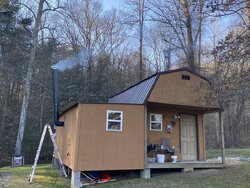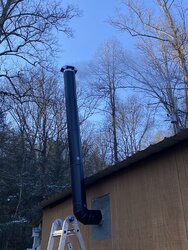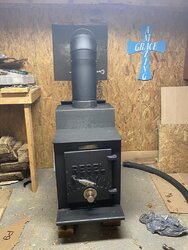I recently bought a Hutch Rebel for my wood work shop. It was purchased new in 1983 for $469. It has a baffle inside and appears to be have been used very little. You can see the pictures to see how I installed it. The fire has to be hot for it to draw good. I added a piece of pipe to make it a little taller as you can see. Could the cap be causing it not to draw good. Unless it’s real hot, when you open the door, smoke comes out. Thanks.







